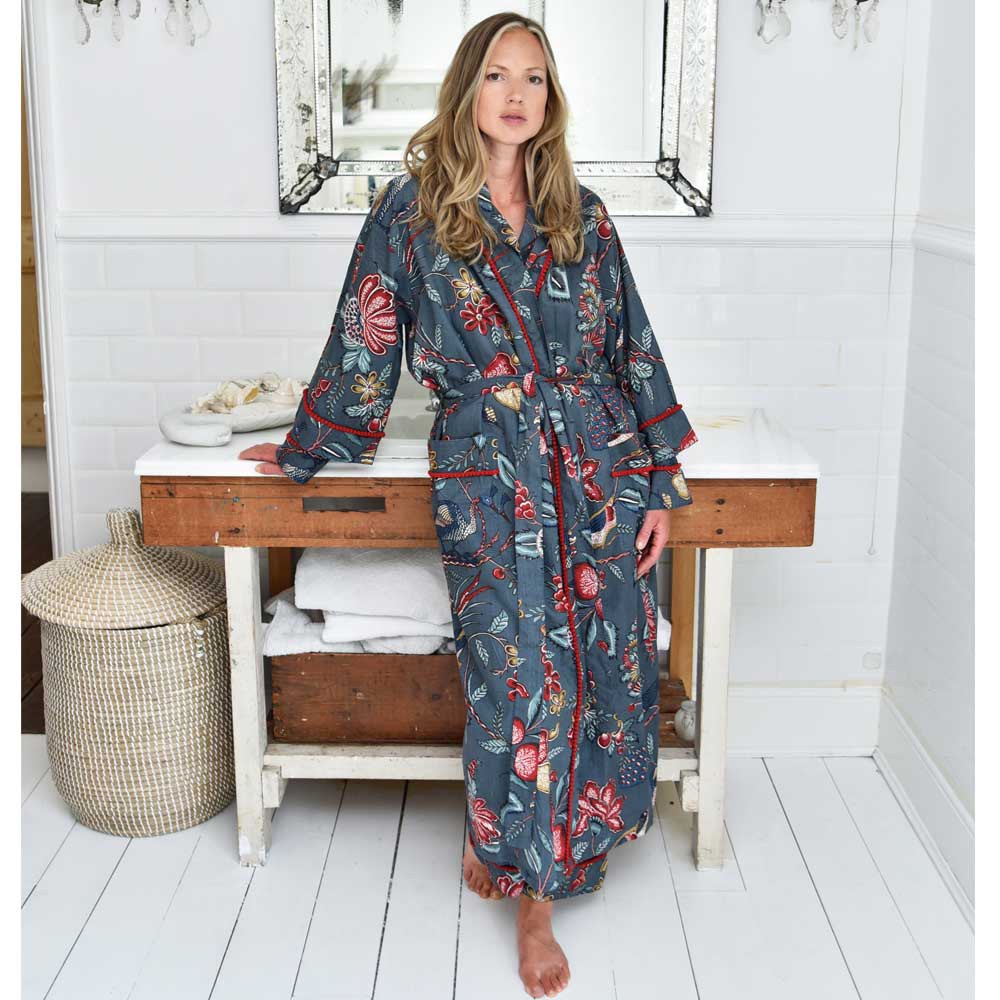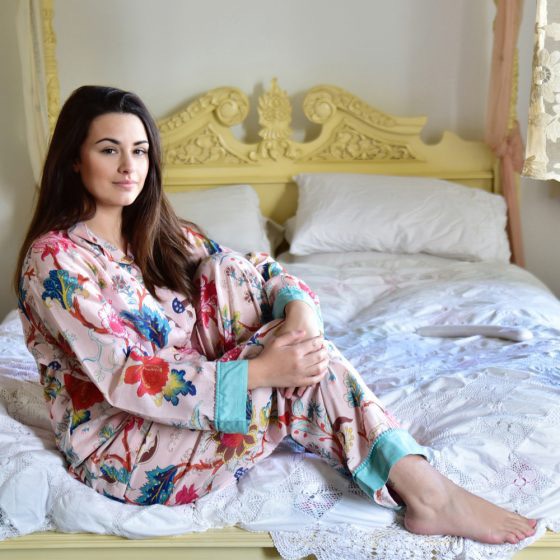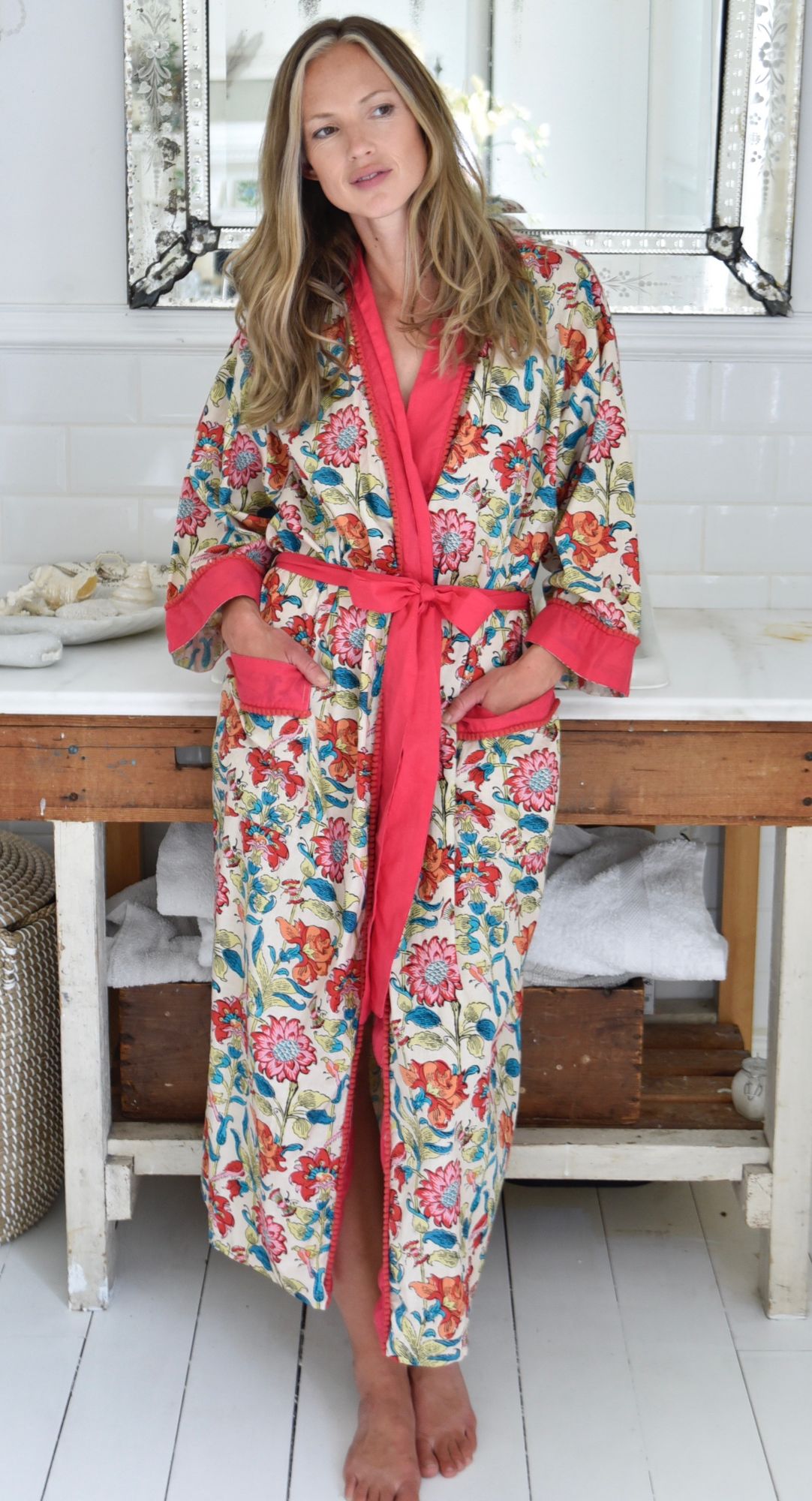Indian Block Printing Explained
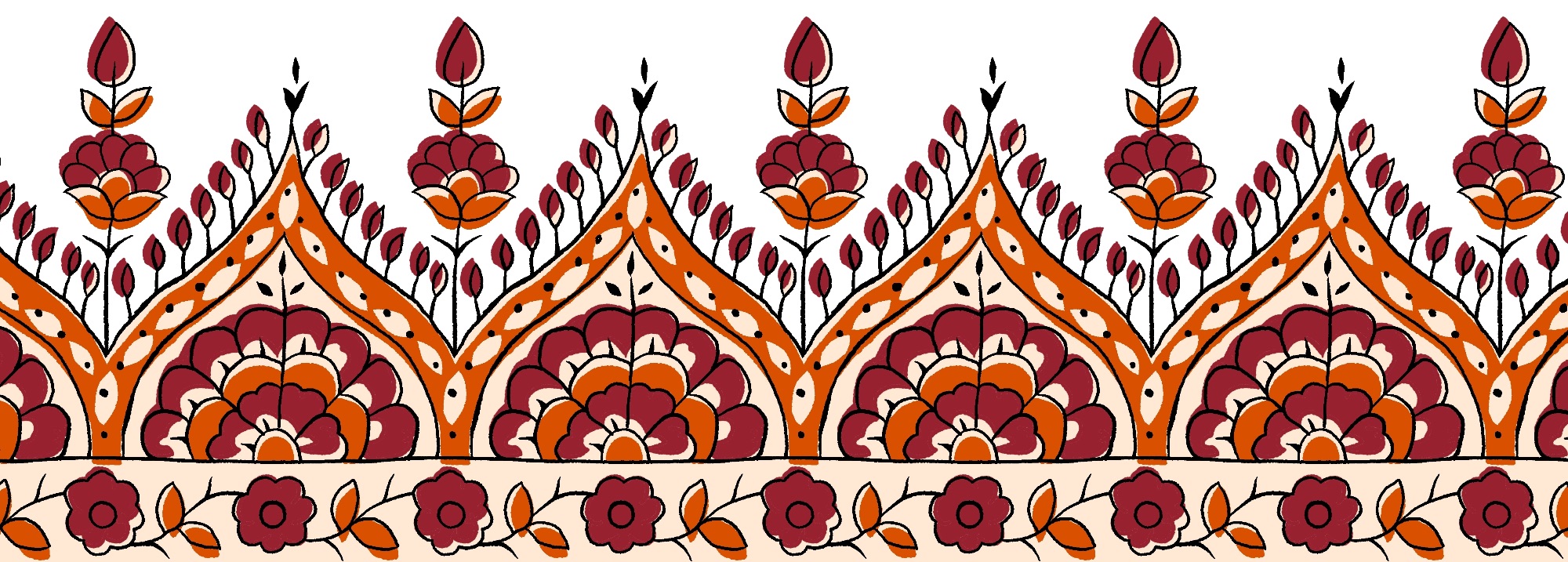
Indian block printing is a traditional multi step way of creating colourful patterns on paper and textiles which has been used for around 2000 years in Asia, . Whilst printing on textiles may have originated in China it was adopted and popularised in India and an area around Jaipur in Rajasthan is where this ancient artisan craft is now most practised.
On the verge of extinction in the last century due to the introduction of synthetic fabrics and cheap, mechanised printing methods there is now a revival of interest in these attractive hand printed designs which often include stylised fruits, flowers and birds.
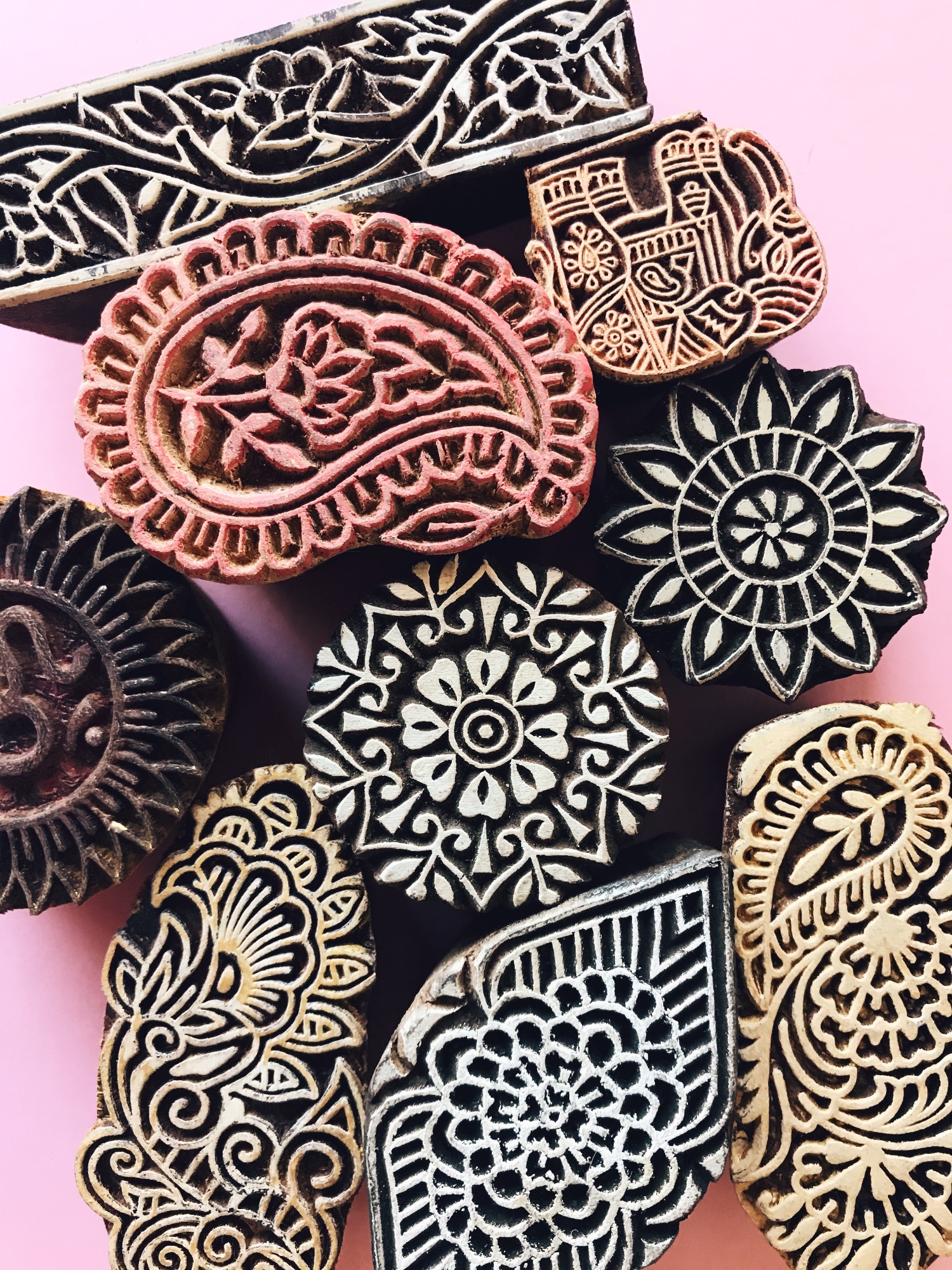
To start the process wooden blocks, traditionally made of teak, though nowadays mango wood is often used, are carefully carved with the motifs to be used. Rubber blocks can also be used and are softer to carve but the smaller design details cannot be cut into rubber as well as they can be into wood and therefore for truly intricate patterns wood is preferred.
Once the blocks are prepared lengths of washed and sun-dried cotton fabric are spread out over tables, a guiding chalk line is drawn on the fabric and the first block is dipped into the natural dye to be used - madder for red, indigo for blue and saffron for yellow, These are the three primary colours that can be mixed to make a rainbow of hues. The block is then carefully placed onto the fabric and either struck by hand or by a wooden mallet to produce a clear image. The block is placed repeatedly in neat lines across the fabric which is then hung to dry. Fabric may be stamped many times with different colours and different blocks until the desired pattern is completed. As the printing is done by eye small imperfections may occur but this is all part of the charm and individuality of the process.
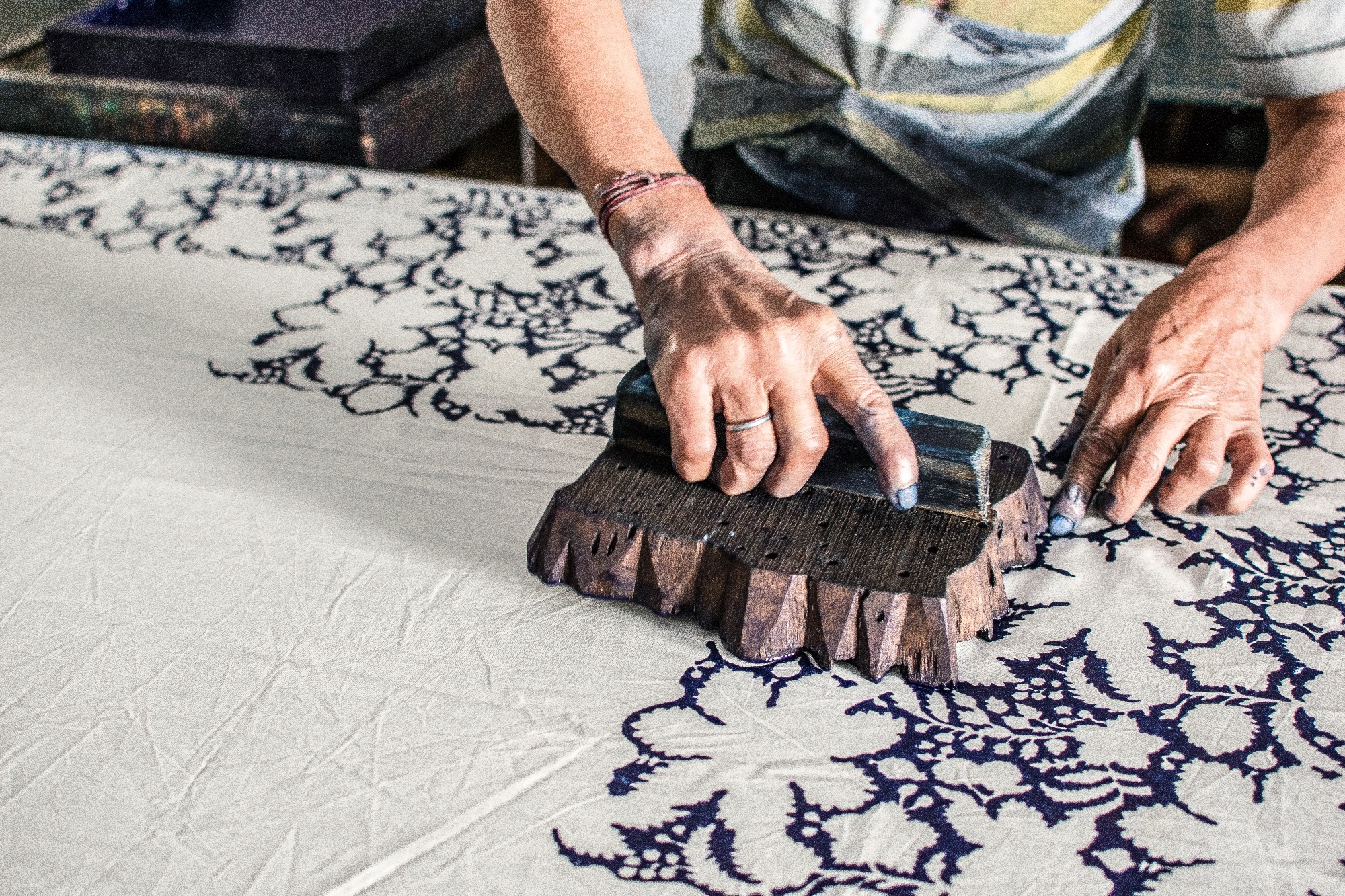
Finally, the newly patterned fabric is made up into bed linens, table cloths, napkins and clothing, including the colourful pyjamas and dressing gowns that are sold at Victoria Goss which are also made using this skilled process. As a small business myself I am so pleased to be playing an albeit tiny part in keeping these traditional skills alive and helping to ensure their survival into the future.
If you would like to add your own piece of clothing made using this incredibly detailed method of printing to your wardrobe do take a look at the nightwear that is available to buy here: https://www.victoriagoss.co.uk/ourshop/cat_1428783-Cotton-and-Bamboo-Nightwear-for-Women.html

